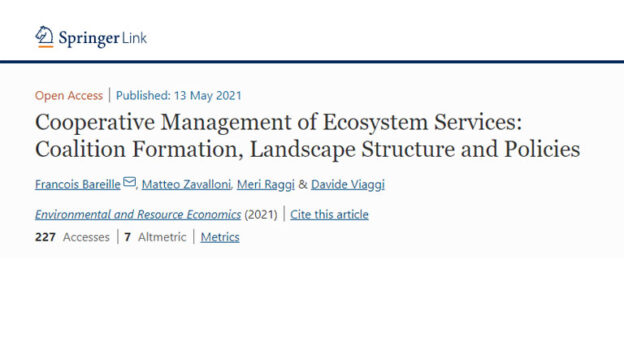In the blog post on the CONSOLE project, we want to recommend a post by Francois Bareille, Matteo Zavalloni, Meri Raggi and Davide Viaggi; being developed during Related Project LIFT (Low-Input Farming and Territories – Integrating knowledge for improving ecosystem-based farming ).
The Summary ago reference to the important role of farmers in the management of ecosystem services, thus relating to part of the objective pursued by CONSOLE. The bibliographic review, as the authors indicate, points to a benefit for those actors who act in a coordinated way, compared to those who are not coordinated.
However, the public good nature of these ecosystem services may hamper the emergence of a cooperative solution at the landscape scale.
There are no doubts that biodiversity and ecosystem services depend on the structure of the landscape, which are related to the decisions of farmers. For example, maintaining the connectivity of natural habitats (ecological corridors).
For instance, they are habitats of pollinators or insect predators of pests -, which contribute to the value of the harvest.
Research objectives
The objective of the research was threefold:
- The first was to look for the size and composition of stable coalitions of farmers willing to cooperate with pollination services, and to what extent they produce economic gains.
- The second objective was to investigate the role of landscape structure in cooperation and conservation outcomes.
- Finally, the last objective was to evaluate how the different public policies aimed at habitat conservation affect the stability of the coalition. In addition, the researchers wanted to know if a policy design that encourages cooperation among farmers would lead to improvements in budget effectiveness.
To achieve the purposes, they formulated a spatially explicit bioeconomic model of nine farmers who can dedicate part of their arable land to semi-natural habitats (flowers, hedges, etc.)
